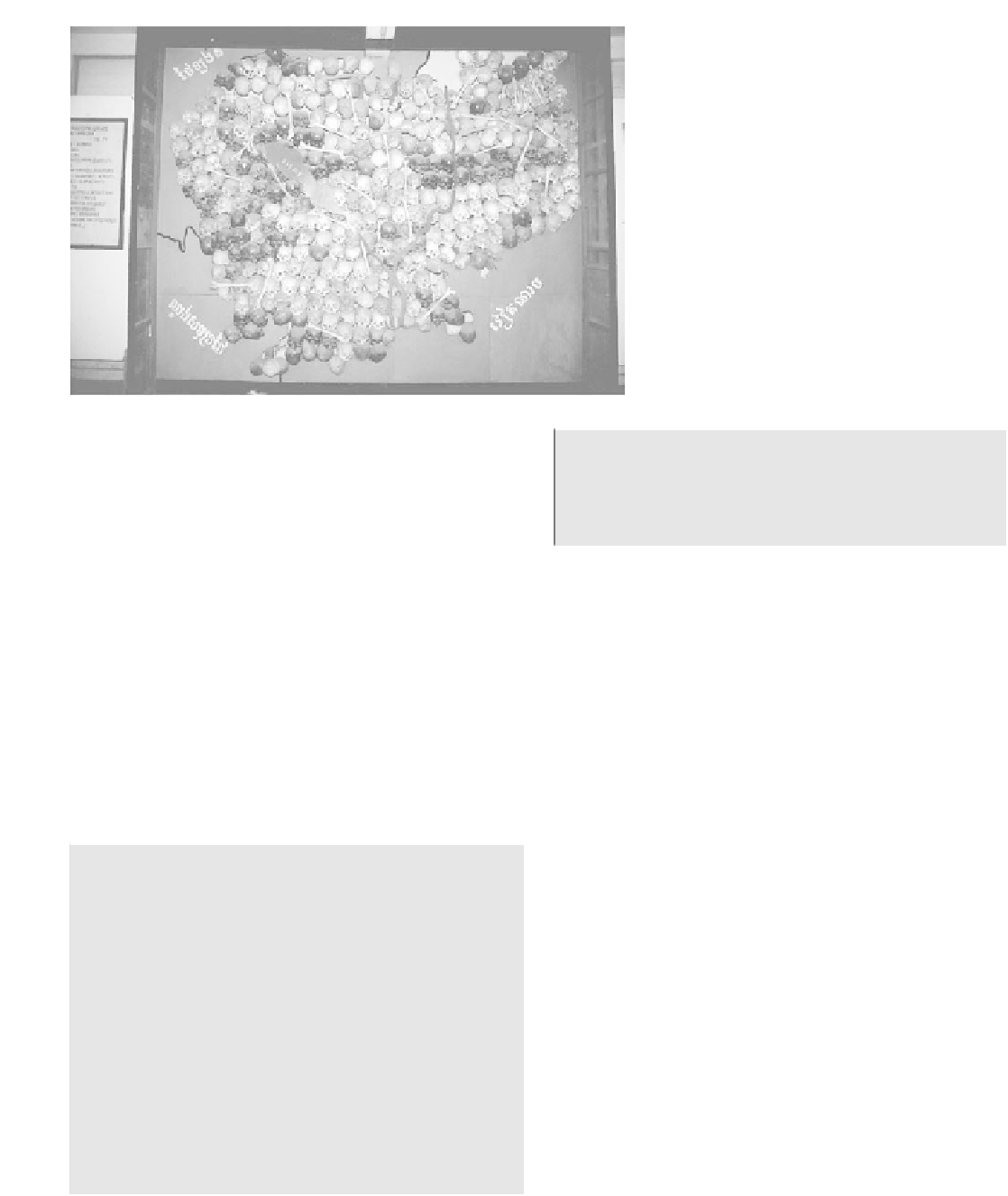Geography Reference
In-Depth Information
Figure 15-20
This map made with real human skulls symbolizes
the millions of people who died at the hands of the
Khmer Rouge during their reign of terror in
Cambodia.
Photograph courtesy of B. A. Weightman.
formed. King Sihanouk was reinstalled, although he later
died of cancer. The coalition government was heavily fi-
nanced by foreign aid, but internal dissension and cor-
ruption meant that little progress was made toward
rebuilding the shattered economy and infrastructure. Ph-
nom Penh University opened in 1988. Only 5,000 teach-
ers had survived of the original 20,000 in 1975. A sex
ratio imbalance was evident in employment. For exam-
ple, 70 percent of workers in the textile and tobacco in-
dustries are women, mostly widows of pre-1975
workers. A former school in Phnom Penh, where 20,000
died, has been turned into a museum to Pol Pot' s geno-
cide (Figure 15-20).
In disputed elections in 1998, Hun Sen became the
head of government. Pol Pot committed suicide in the
same year, and other Khmer Rouge leaders have either de-
fected or live clandestinely in various parts of the country .
help of international agencies, mine clearing is
proving successful. Currently there are fewer than
300 new amputees a year. One in every 236 Cambo-
dians is an amputee.
CAMBODIA TODAY
Cambodia continues as a very poor country although con-
ditions are improving. Now only 26 percent of children un-
der age five are malnourished as compared to 40 percent
only five years ago. Nevertheless, infant mortality rates re-
main high at 62 per 1,000 live births. More than 90 percent
of births in rural areas are at home and attended by tradi-
tional midwives. Only 13 percent of primary school stu-
dents complete grade five in five years. Only 19 percent of
students in upper secondary school are female. The main
reason given for the fact that girls do not attend much more
than primary school is that “they are needed at home.” Of
the rural population, only 26 percent have access to safe
water. A mere 6 percent of rural people have access to im-
proved toilet facilities. One-third of Cambodians live on
less than US$0.50 a day . Clearly , Cambodia remains one of
the least developed countries in the world.
Rice production accounts for nearly 88 percent of the
available cultivated area. Farms tend to be very small—
around 2.5 acres (1 ha). A farm of this size supports a fam-
ily of five. Rice is supplemented by fruit and vegetable
cultivation. Although rice yields are low , Cambodia became
self-sufficient in rice in 1996 and had a surplus to export.
Fishing is important as it provides the main source of
protein in the Cambodian diet. Fisheries are both inland
and marine, and fish are also raised in ponds, pens, and
Death Awaits
Because of the influx of military hardware to vari-
ous factions during the 1980s, Cambodia remains
one of the most heavily land-mined places in the
world today . At that time, here were more than
3 million mines, mostly concentrated in the north-
west province of Battembang, a Khmer Rouge
stronghold. There have been more than 40,000 land
mine victims since the end of the insurgency . It is
estimated that in 2004, more than 5 million people
in some 6 thousand villages were at risk. From
2000 to 2005, there were at least 850 deaths or seri-
ous injuries from land mines each year. With the



















Search WWH ::

Custom Search